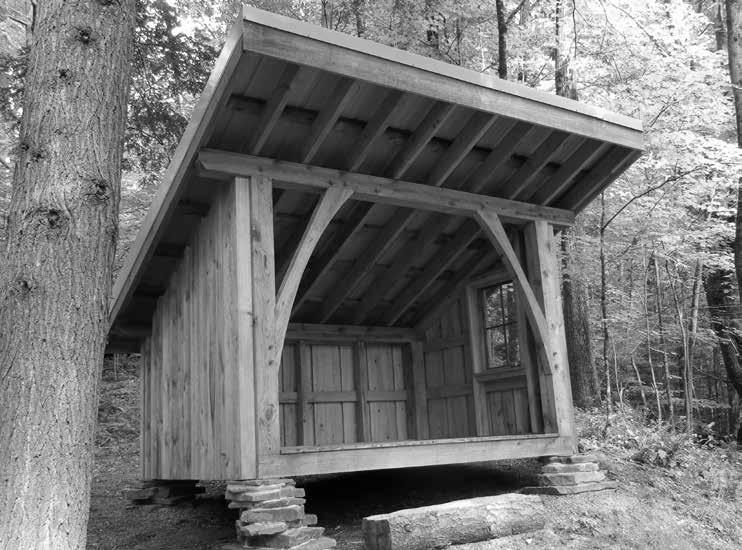
3 minute read
Resisting Rot
Jeff Joseph
An old cliché we have all heard is that nothing is certain but death and taxes. True enough as far as it goes, but I am going to add a third certainty—that after things die, they rot. This is a good and necessary thing in the big picture, as the cycles of death and decay are essential in creating the conditions that foster future life. Today’s rot creates tomorrow’s fertility. In our everyday lives, however, rot is a relentless menace, consuming all kinds of things that we would much rather not relinquish so easily. Especially things made out of wood.
Advertisement
For a broad range of insects, bacteria, and fungi, wood is food. In order for this food to be palatable, three conditions are generally required: adequate temperature (generally between a bare minimum of 35 and a maximum of 100 degrees F, with temperatures higher in the range encouraging faster consumption), adequate moisture (a middle range between the extremes of fully saturated when freshly cut, and kiln-dried), and adequate available oxygen for respiration while the decay organisms eat. Once these basic requirements are met, the unique chemical and structural characteristics of each species of timber will determine just how desirable a given piece of wood will be for decay organisms.
So what are some strategies for building with wood that will encourage longevity? One common option is the use of pressure treated lumber (PT), which in our area is generally plantation grown southern pine of a few different species. It is readily available, and is reasonably priced. It is infused with a formulation of copper that deters decay organisms—a much less toxic method than the arsenic and chromium that were previously used to treat lumber until outlawed for residential use in 2003. PT is commonly used for buried posts, mudsills, fences, retaining walls, decks, and other outdoor structures where the lumber will be in direct contact with the soil or water. Some downsides are its residual toxicity (both for humans and the environment), a limited range of standard sizes to choose from, its generally low quality due to knots and other defects, its very high initial weight when freshly infused, as well as its propensity to warp, cup, twist, check, and shrink substantially when drying. So while pressure treated wood does a lot of jobs adequately, it really doesn’t do any of them with a whole lot of style or refinement. This is where local wood comes in.
Being surrounded by diverse forests gives us a great many options when it comes to selecting wood for any given project. Without chemical treatment, we have to rely on some basic knowledge of the natural properties of the different species at our disposal, as well as some common sense, in order to build lasting structures.
With respect to decay, the USDA Forest Products Laboratory classifies our common timber species in four categories, ranging from ‘very resistant’ down to ‘nonresistant’ (see Resources). The most resistant species we have here in NY that grows to timber size is black locust (Robinia pseudoacacia), but it is under ever-increasing demand so can be hard to source in quantity, and can command very high prices. It has often
been mischaracterized as a ‘weed’ and/ or as an invasive species, but if you have access to a grove of mature locust consider yourself very fortunate, as its ability to sprout from both stump and roots makes it a truly renewable resource. After locust, there are dozens of other species in our region with varying degrees of resistance, most of which are suitable for outdoor projects when used strategically.
The image above is of a simple structure I built in my woodlot using four species of locally sourced lumber. From the ground up, it starts with stone piers, which helped to create a solid, level base. They also hold the entire structure away from any direct contact with the soil, which is the quickest route for decay organisms to get a foothold in wood. The sills and joists that sit directly on the stones and support the frame are white oak (Quercus alba), which has high rot resistance, great strength, and is very reasonably priced in my area (black locust would have been another good choice here, but would have been over five times the price). continued on page 16







